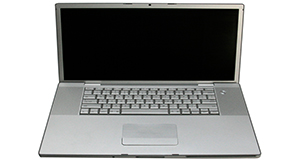Abstract
This publication provides an overview of clickbait and its characteristics. The publication also discusses a few implications of clickbait use. Written by Nicole Patten, Ricky Telg, and Kevin Kent, and published by the UF/IFAS Department of Agricultural Education and Communication, March 2024.
References
Anderer, J. (2022). Study exposes how Facebook “clickbait” entices users into reading posts. Retrieved from https://studyfinds.org/facebook-clickbait-entices-users/
Brown, N. (2018). How Content Marketers Can Use the Power of Clickbait for Good. Retrieved from https://www.skyword.com/contentstandard/how-content-marketers-can-use-the-power-of-clickbait-for-good/
Collins, K., Shiffman, D., & Rock, J. (2016). How are scientists using social media in the workplace? PLOS ONE, 11 (10). Retrieved from https://doi.org/10.1371/journal.pone.0162680
Counts, L. (2019). How Information Is Like Snacks, Money, and Drugs – to Your Brain. BerkeleyHaas. Retrieved from https://newsroom.haas.berkeley.edu/how-information-is-like-snacks-money-and-drugs-to-your-brain/
Garcia, J. J., Colodro-Conde, L., Barlow, F., & Medland, S. (2022). Scientific Clickbait: Examining Media Coverage and Readability in Genome-Wide Association Research. Retrieved from https://doi.org/10.31234/osf.io/w29as
Georgiou, M. (2016). Write compelling headlines instead of clickbaits. Search Engine Journal. Retrieved from https://www.searchenginejournal.com/combating-clickbait-compelling-headlines/162897/
Indurthi, V., Syed, B., Gupta, M., & Varma, V. (2020). Predicting Clickbait Strength in Online Social Media. Proceedings of the 28th International Conference on Computational Linguistics, 4835–4846. Retrieved from https://doi.org/10.18653/v1/2020.coling-main.425
Iyengar, S., & Massey, D. S. (2018). Scientific Communication in a Post-Truth Society. Proceedings of the National Academy of Sciences, 7656–7661. Retrieved from https://doi.org/10.1073/pnas.1805868115
Pengnate, S. F. (2016). Measuring Emotional Arousal in Clickbait: Eye-Tracking Approach. Twenty-Second Americas Conference on Information Systems, 1–9. Retrieved from https://aisel.aisnet.org/amcis2016/HCI/Presentations/3/
Pengnate, S., Chen, J., & Young, A. (2021). Effects of Clickbait Headlines on User Responses: An Empirical Investigation. Journal of International Technology and Information Management, 30 (3). https://doi.org/10.58729/1941-6679.1440
Venneti, L., & Alam, A. (2018). How Curiosity Can Be Modeled for a Clickbait Detector. Retrieved from https://doi.org/10.48550/arXiv.1806.04212
Xu, Z., Laffidy, M., & Ellis, L. (2022). Clickbait for Climate Change: Comparing Emotions in Headlines and Full-Texts and Their Engagement. Information, Communication & Society, 1–18. Retrieved from https://doi.org/10.1080/1369118x.2022.2050416

This work is licensed under a Creative Commons Attribution-NonCommercial-NoDerivatives 4.0 International License.
Copyright (c) 2024 UF/IFAS

